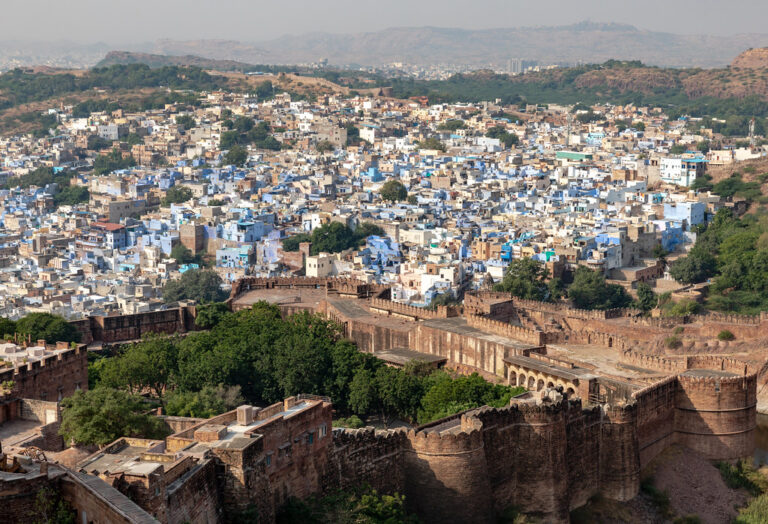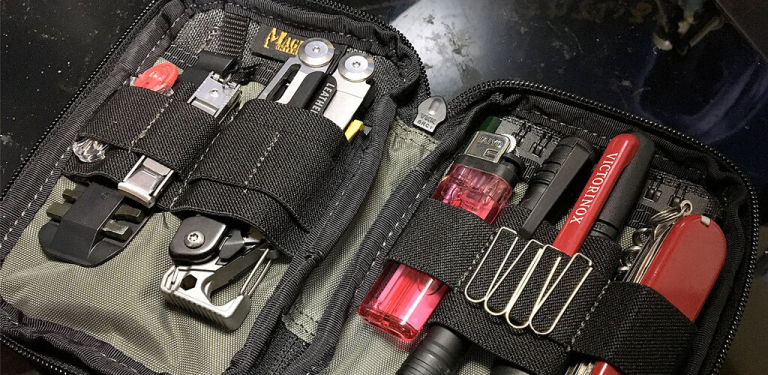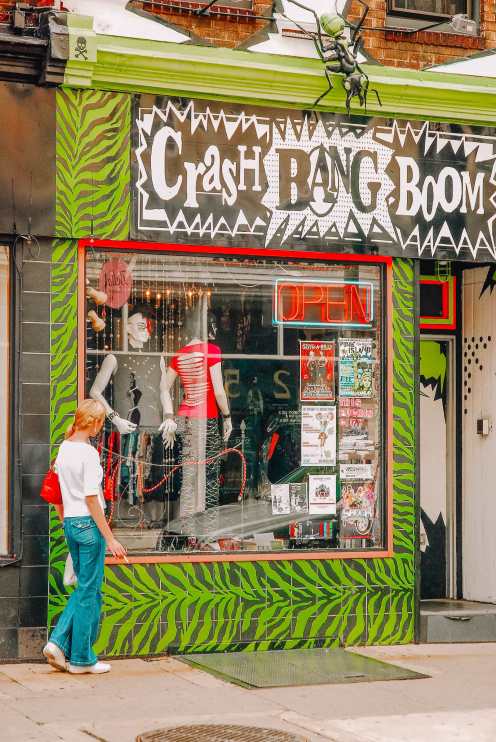Especially the alpha male. You don’t in any way mess with the alpha male.
In Semenggoh, the 9 am feeding time meant that a large crowd had gathered for the special opportunity to see an orang-utan up close, and it really was – when a mother and her baby emerged from the undergrowth it really was a rare sight to behold. It made me stop in my tracks, edging a little closer slowly and softly to savour the precious moment.
However, the notion of these centres has raised the debate regarding the accessibility of the animals and the resulting actions of the visitors, which I witnessed myself during my visit to Sarawak.
Best Place for Seeing Orangutans in Borneo
However, the debate is that this constructed environment had led to the ‘humanisation’ of the animals, which in turn means they rely on humans too much and in turn are affected by the over-contact with them.
It exists for a positive purpose and it’s obvious that the park rangers have a close bond with the animals.
Tourists getting too close to Orangutans
Not only can getting too close to the animals confuse them, but the spread of human diseases is also likely.
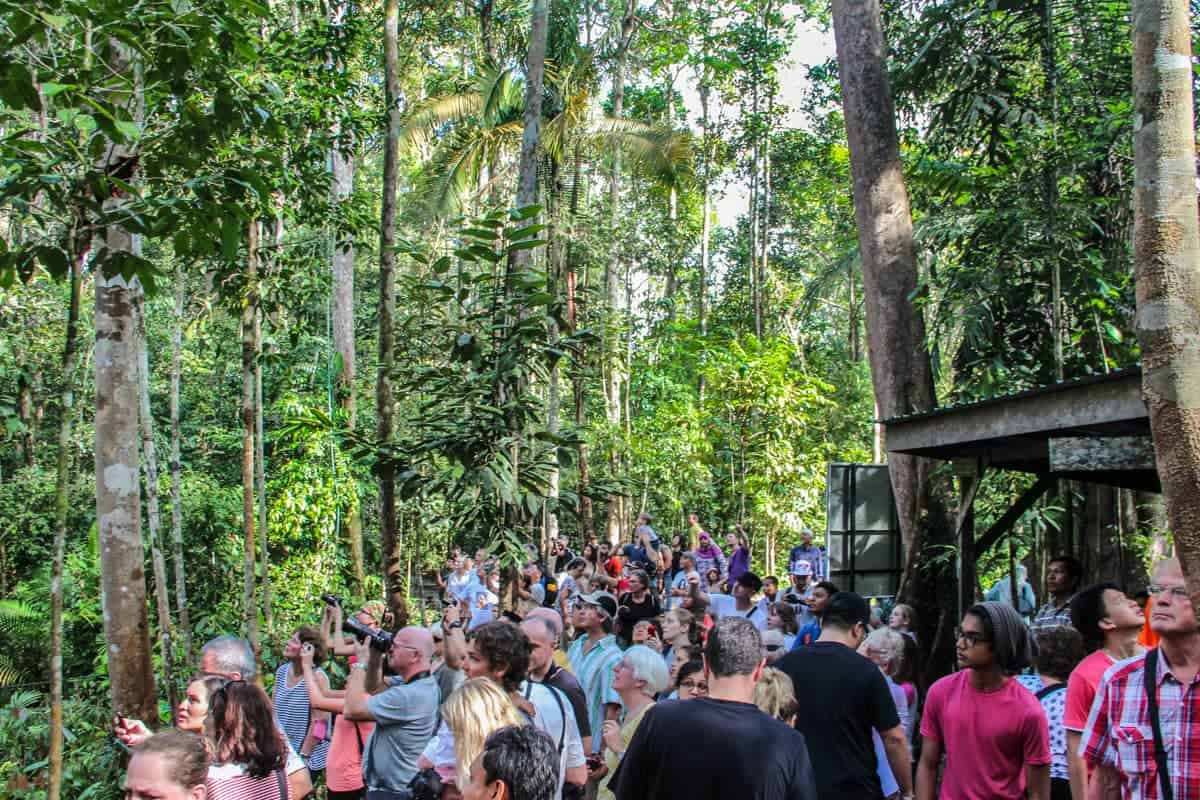
Overall, the orangutans appeared happy, content and playful. They are taught to fend for themselves and forage for food, as well as how to move through the jungle – with the aid of rope which you can see connected to the trees in the distance.
Orangutan Rehabilitation and Tourist Actions
I’m glad I spent an hour observing these beautiful creatures and being able to be so close to them in a well-maintained and natural environment. It’s just a shame I didn’t enjoy observing my fellow man.
How would you feel if a huge crowd of people descended on you like that? Yes, I would want to claw your face off too.

While the notion of a rehabilitation centre is debatable, there is praise for its existence.
Except the vast majority DIDN’T move back, waiting for that moment that the orang-utan would get just that little bit closer. At this point, the Park Ranger stood on his little platform to announce anxiously to the crowd that it was essential to give the orangutan space since she was about to cross the paved path to get to the other side of the forest.
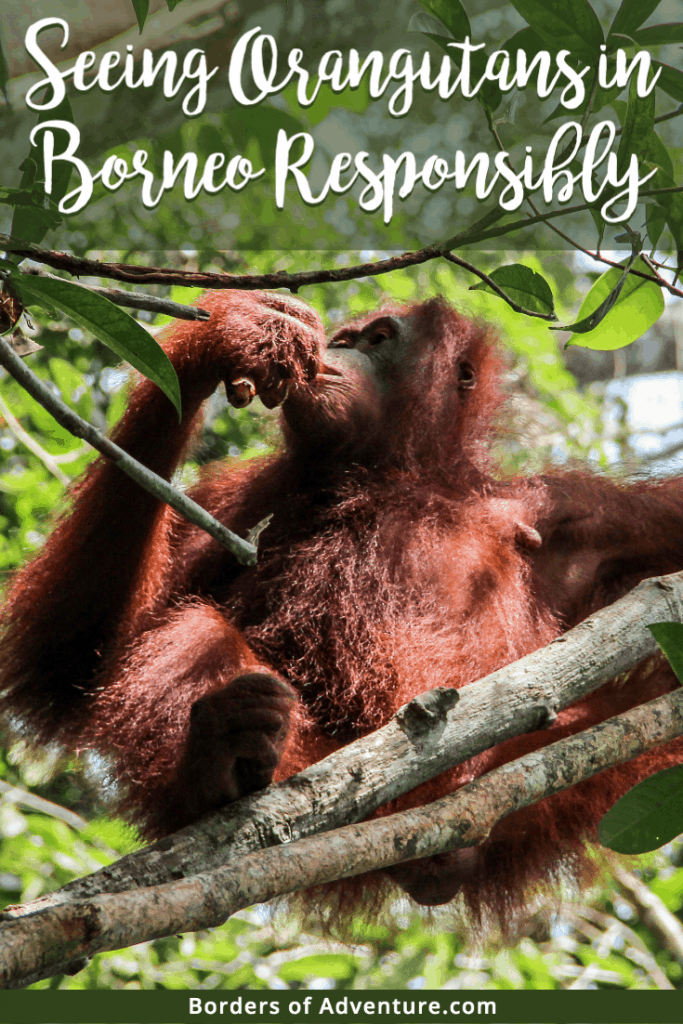
Whilst visiting a National Park results in a greater need to protect it so that people can still visit, the destruction of an orangutan’s natural habitat poses a far greater threat than tourists observing them from a constructed viewing space.
Aside from national park trekking and mountain climbing, it was one of the main things I wanted to do there. After all, many take holidays to Borneo to see orangutans as their main option since this is the place to get up close and personal to some of the world’s most incredible creatures without the restriction of a confined, zoo environment.
Yet when I was there some visitors chose to ignore this point. In an environment where the orangutans are cared for in the most natural surroundings possible; where there are no cages, no glass windows and nothing to separate them and you from absolute, direct contact.
So for those of us who did move back, our view was obstructed by those crowding around the animal as she made her pass to the other side. The click, click of the cameras despite the warnings of using flash; the exasperating gasps, oohs and ahhs, despite the call for silence and space.
Orangutans Feeding Time and the Viewing Frenzy
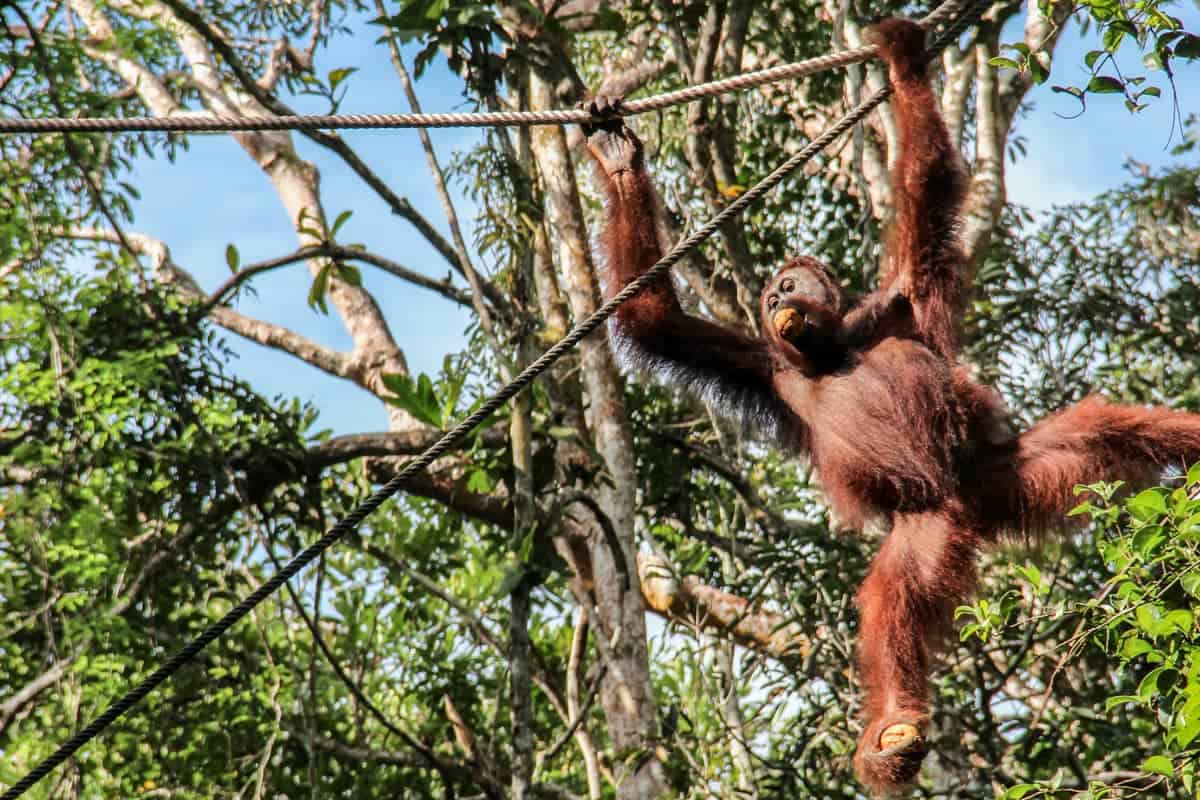
Some people do adhere to the rules
Similar in their efforts, there’s still a divide as to which is best. While the sanctuary in Sepilok is more popular, I choose to visit Semenggoh because I had heard from wildlife enthusiasts and other travellers that it was the better of the two. You can’t touch the orangutans, hold them or get that close as you potentially can in Sepilok (or so it’s said) – you are merely there to observe from a safe distance.
For the more confident orangutans (and no doubt more inquisitive) who would appear from a branch right above you, a park ranger was always close by to appease the crowd or walk alongside the orangutan for the ultimate protection of all in the park – the orangutan leading the way and taking control.
It’s just a shame that some of us ruin that new environment in which Oranutans are now living.
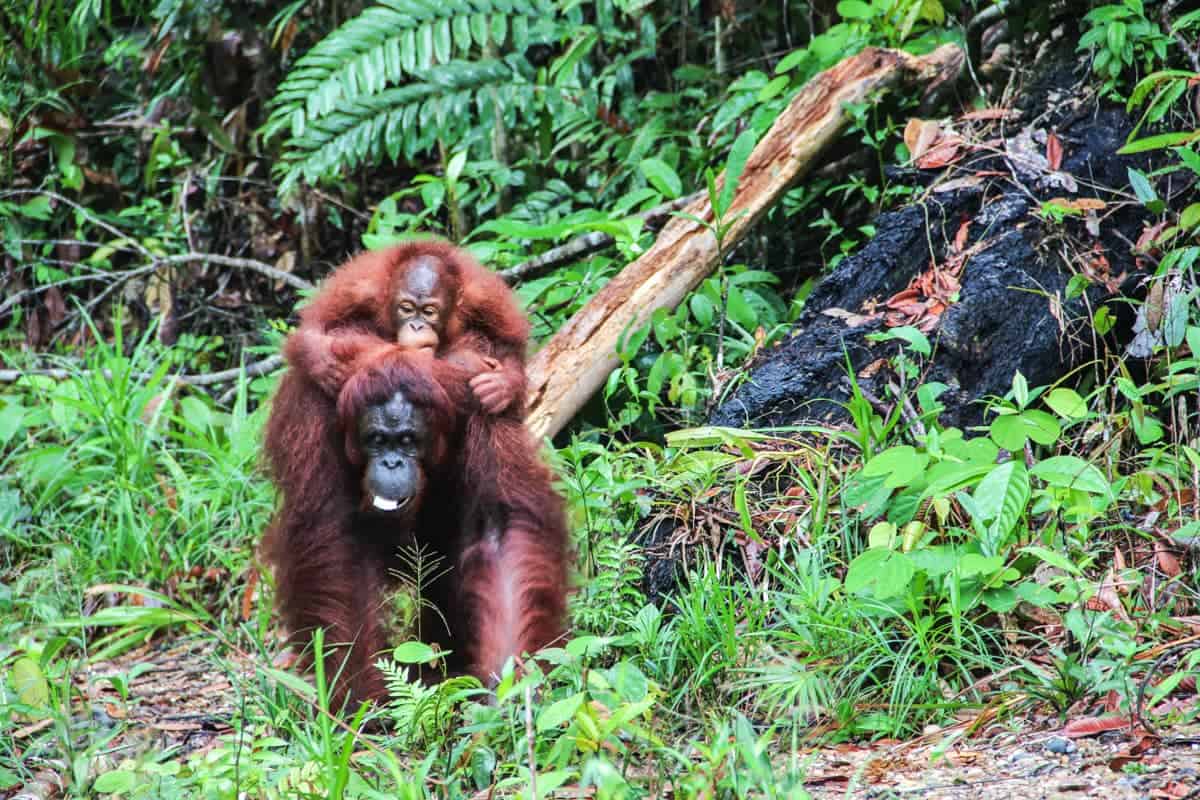
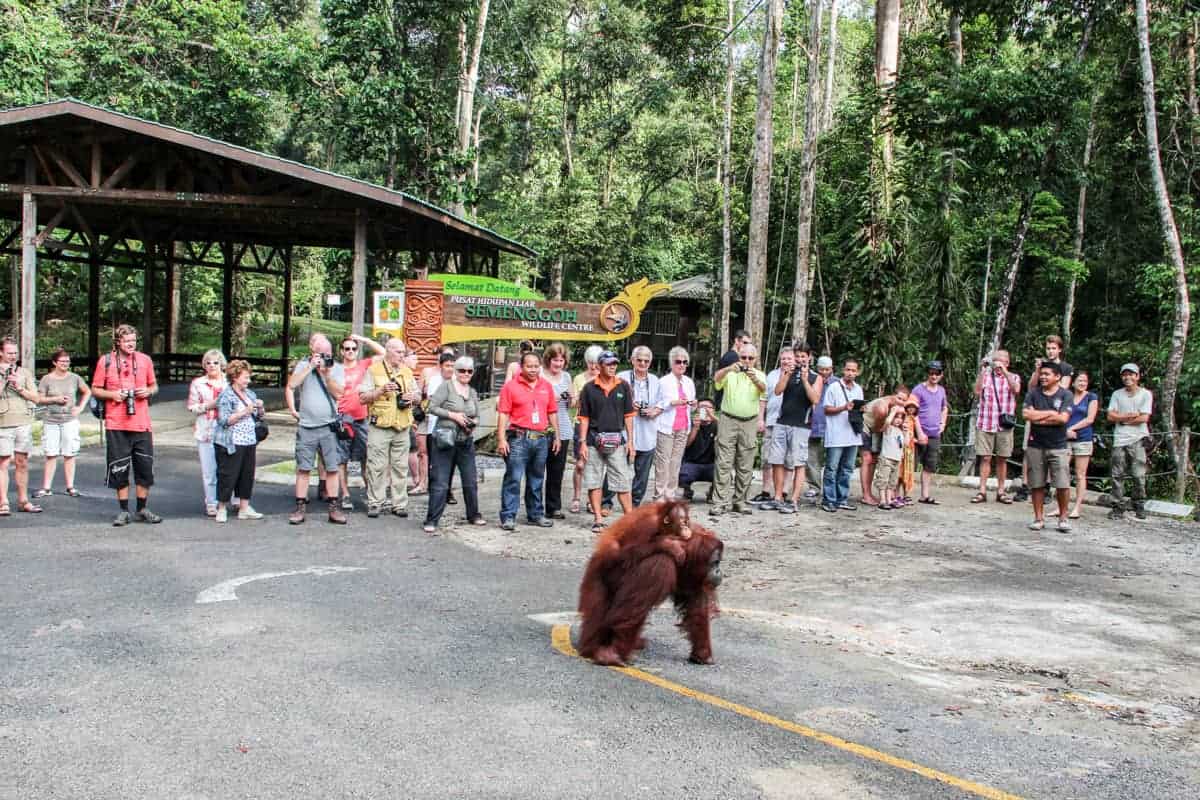
The Semenggoh Wildlife Centre in Sarawak in Orangutans
Orangutan Sanctuaries in Borneo (or Rehabilitation Centres as they are referred to) have become the most desirable option for seeing these native animals since a sighting is almost guaranteed in comparison to a trek through the wilderness of a National Park. The centres are set within an Orangutans natural habitat and effort is made to ensure that the forest area is maintained and not destroyed.
These actions are detrimental to the exact reasons this environment needs to exist – for protection.
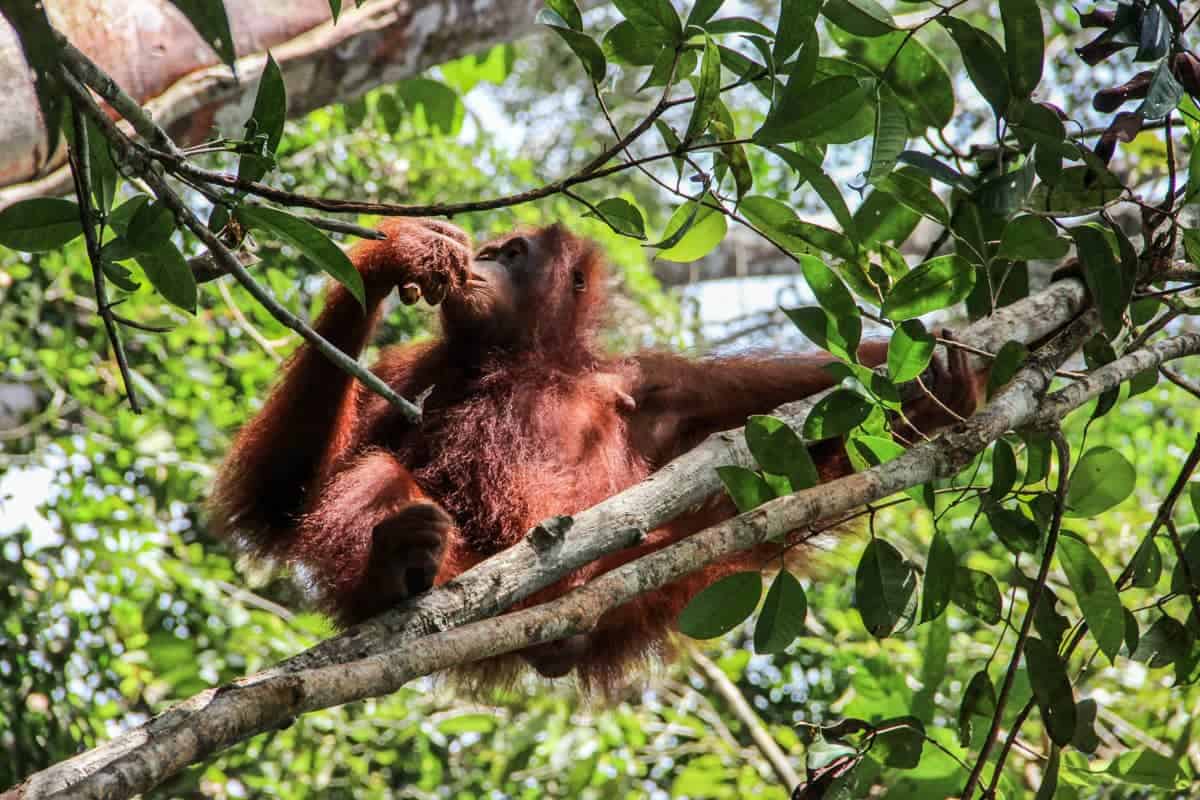
An environment where human contact wouldn’t even exist.
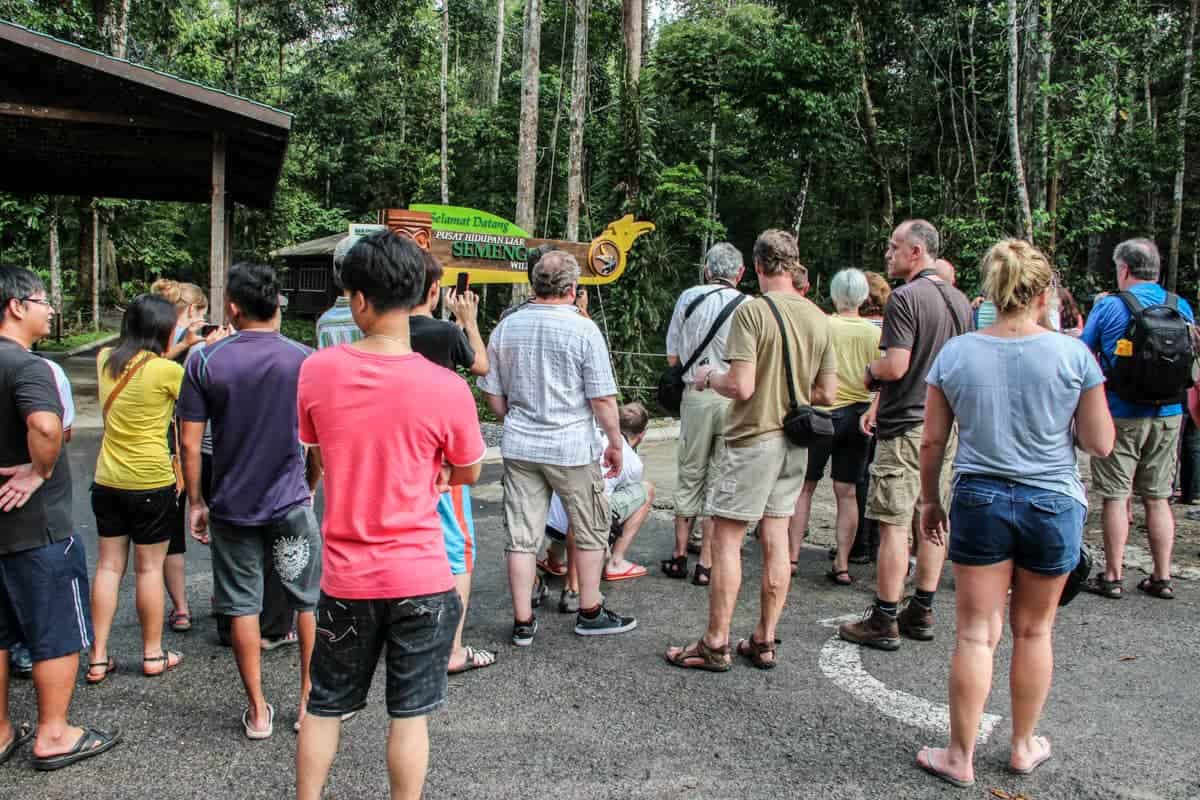
It was fascinating to see how frustrated one orangutan became at not being able to break open a coconut on his first few attempts! He’s here to learn after all.
The island of Borneo is split into two states – Sarawak in the west and Sabah in the east – and each has its own orangutan sanctuary. The majority of people who visit Borneo stay mainly in one state rather than travel around, so that normally determines which centre you end up going to.
Seeing Orangutans in Borneo is a Unique Experience
Seeing orangutans in Borneo is an insatiable need when visiting this region. The Borneo orangutan is an endangered species that’s native only to the island and parts of Indonesia.
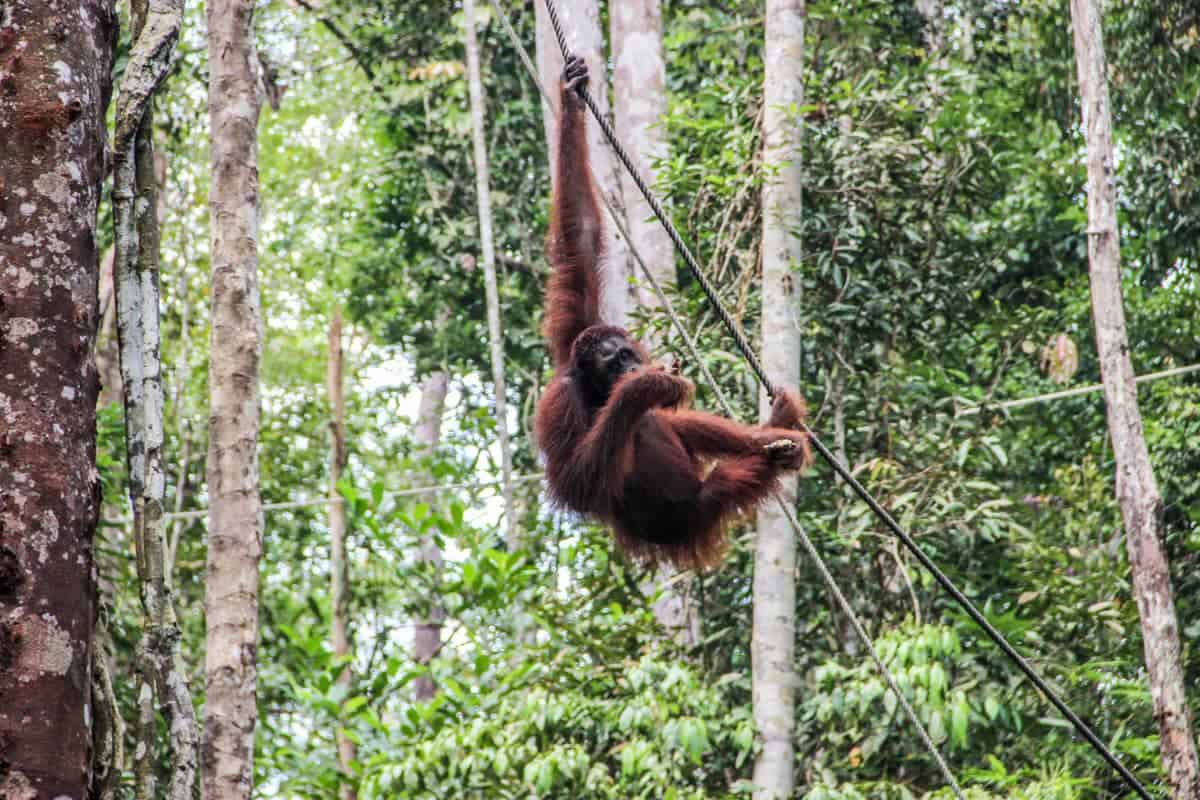
For once, I didn’t have to squint through the trees, scramble for a pair of binoculars or rely on my camera’s zoom lens. Less than two metres away was a wild, beautiful, endangered animal, wandering slowly through the forest towards those who shared her land, without a care in the world.
He explained the definition of wild and how the orangutans live here. He declared that if the orangutan acts in self-defence, the park would NOT be liable since it would attack if threatened.
This is exactly how it should be in order for these animals to thrive in a natural environment, even if it has been constructed for them.
But did that stop anyone? No. It actually made me really anxious that something would happen, even if I did secretly want an orangutan to act in order to prove a point. The park rangers can only do so much when it comes to moving people and it appears to be a pretty tough job.
From my experience there, we should not be too quick to blame the centres themselves which house these incredible creatures, but the tourists on Borneo holidays who book an Orangutan tour, act disgracefully and ignore rules. The tourists who miss the point that an orangutan is a WILD animal.
Related
Disclaimer: This post contains affiliate links to handpicked partners, including tours, gear and booking sites. If you click through or buy something via one of them, I may receive a small commission. This is at no extra cost to you and allows this site to keep running.
In fact, tourists only have access to a very small part of the sanctuary forest area. With only two viewing platforms here, the rest of the dense forest is untouchable.
Think About Your Actions When you Visit Orangutan Centres
Many thanks to The Sarawak Tourist Board who arranged my visit to the centre. All opinions, as always, are my own.
Despite the actions of others, I wouldn’t think twice about visiting a place like this.
In Sarawak, there is the Semenggoh Wildlife Centre in Sarawak.
Visiting Semenggoh Wildlife Centre, Sarawak
- The Semenggoh Wildlife Centre is approximately one hour from Kuching city centre by bus (2 Ringgit) and taxi (approximately 30 Ringgit).
- The entrance permits cost 10 Malaysian Ringgit (€2-3) for adults and 5 Ringgit for children.
- Tickets can only be purchased at the entrance and not booked online or in advance.
- Opening times are 8 am to 10 am and 2 pm to 4 pm.
- This corresponds with feeding times that take place from 9 am to 10 am and 3 pm to 4 pm
- More information can be found on the official Semenggoh Wildlife Centre website.
When the mother and baby orangutans moved closer towards the crowd, we are politely asked by the park ranger to move back to give them the space they would normally be afforded in the wild.
Interested in a Responsible Borneo Orangutan Tour? – Pin It!
The Semenggoh Wildlife Centre in Sarawak has been around for 40 years and helps to care predominately for orangutans who have been displaced, rescued from an inhumane environment (such as being kept as pets) or found injured in the forest.
Here they are taught to adapt to and live in the wild expanse of a forest reserve that is monitored and controlled. While many are never able to be released to the wild again, there is the possibility for it to happen if it could work.
